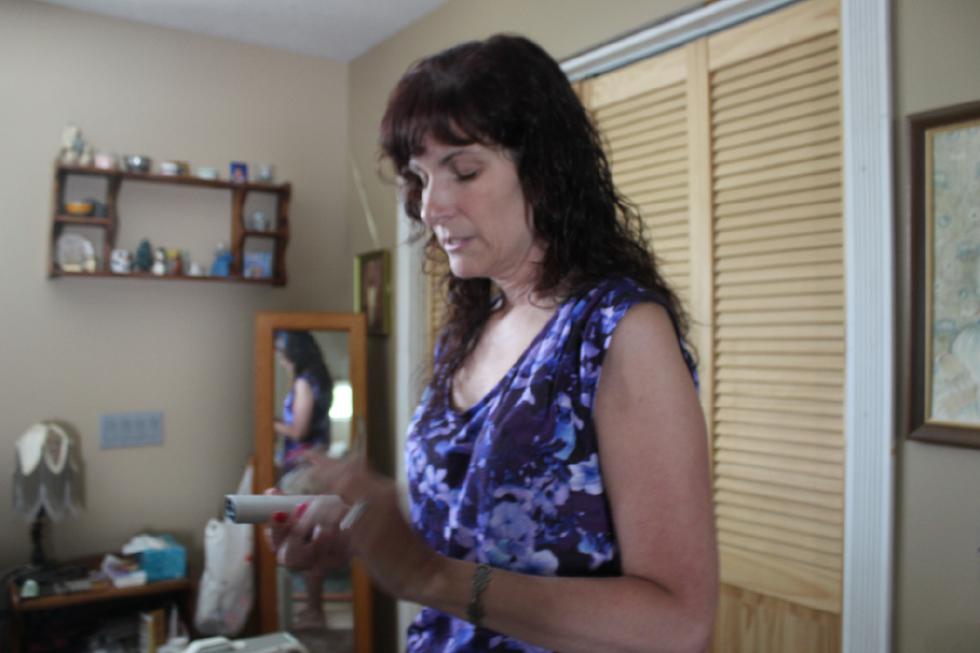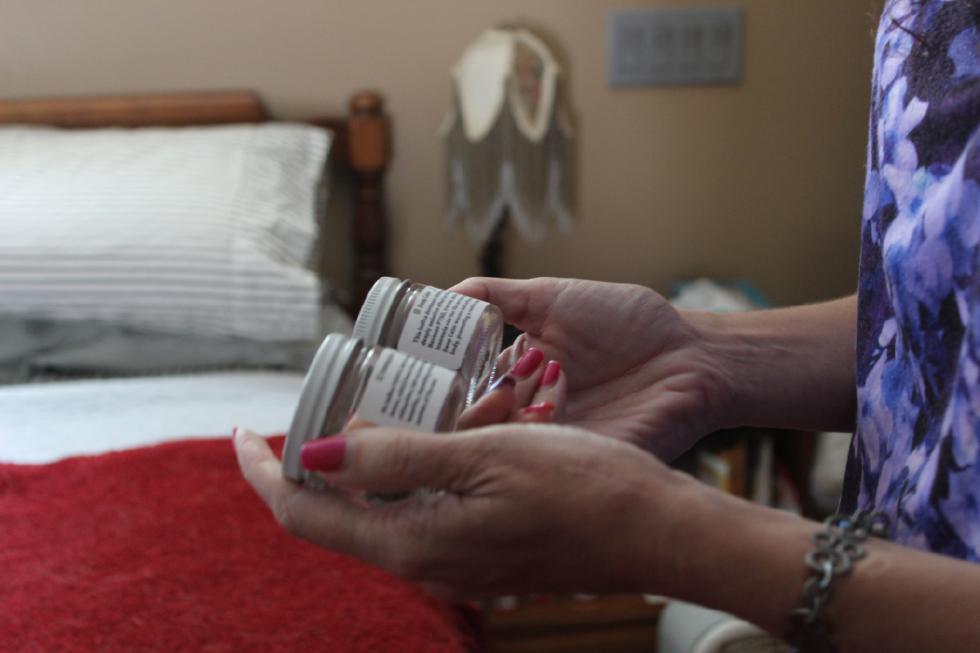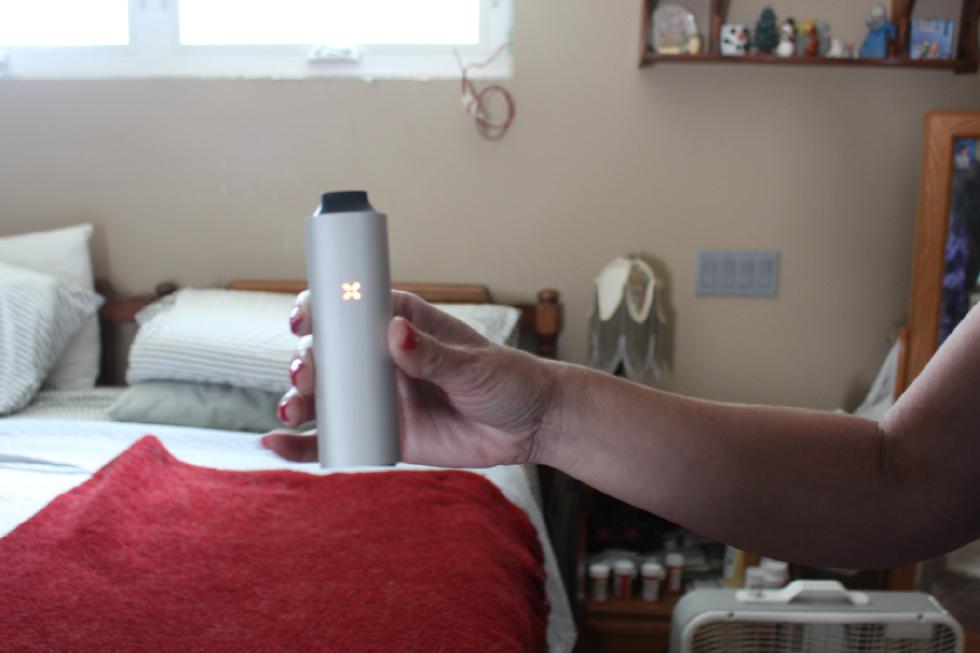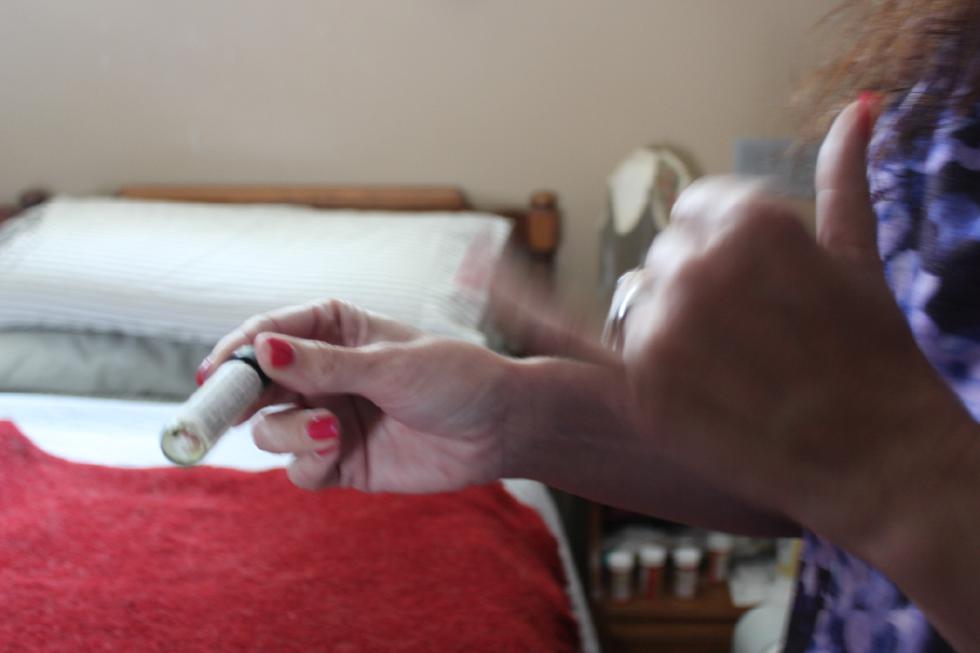For cancer patient Valerie, marijuana makes the difference between walking and not walking.
“I’ve totally outlived my expiration date,” she says, laughing.
Valerie, 61 — a long time Western Mass resident who asked to be identified only by her first name — has fought breast cancer for nearly a decade, and in 2011 doctors discovered the cancer had spread to her skull, bones and major organs. They told her she had months to live. Four years later, the stage four breast cancer patient uses marijuana not only to (hopefully) kill off cancer cells, but to alleviate the side effects of her disease and of her regular chemotherapy treatments.
In 2012, Massachusetts voters legalized medical marijuana with people like Valerie in mind. Three years later, we’re still sorting through the bureaucratic details and only one of the planned dispensaries has opened, leaving medical marijuana patients to fend for themselves. Without dispensaries, patients are legally able to grow for themselves, and those who are unable to or do not know how to can legally request that someone — a registered caregiver — grow for them.
Initial caregiver legislation placed no restrictions on how many medical marijuana patients a caregiver could cultivate for, but in May 2013, the state released new regulations saying caregivers could only grow enough for themselves and one other medical marijuana patient.
Jim Robinson, owner of Jim Buddy’s Vapeshop in Chicopee, says he — along with many others in the caregiver community — put months of effort and money into a grow business before the state changed its mind. Like many others, Robinson says, he decided to provide for a number of patients against state policy — otherwise, he would have lost out on his investment.
“We would have been unable to maintain the grows on that scale,” says Robinson. “It would not have been economically viable.”
Robinson says he gave up the precarious business of caregiving when he opened up his shop, but other Valley caregivers — along with medical marijuana patients growing for themselves — are required to get rid of their plants once New England Treatment Access opens in Northampton next month. Exceptions will be made in cases of hardship, says a spokesperson for the state’s Department of Public Health.
The back-and-forth with the state’s caregiver policies has left medical marijuana users feeling uncomfortable talking openly about their means of obtaining their medicine.
Valerie is especially tight-lipped because she requires “copious amounts” of marijuana to achieve cancer treatment standards. Her method may not be fully backed by science — yet — but Valerie says her willingness to try alternative methods to treat her advanced cancer is the reason she’s still around to talk about it.
Valerie does not smoke or ingest marijuana, so she does not get high. She grinds the whole plant into a powder and mixes it with coconut oil to form a concoction she uses as a suppository.
“They call it the backdoor method,” Valerie says with a laugh.
Valerie may chuckle, but the results she’s gotten from six months of this treatment are no laughing matter. Because her cancer is so advanced it’s in her bones, without the marijuana she finds it incredibly difficult to walk — a condition compounded by the muscle soreness and stiffness that come with daily chemotherapy.
Valerie says she went from barely being able to move and feeling nauseated to living life normally — nausea-free — and swimming at her leisure. Last week, she says, she even painted her house. She says in the months that she’s been using the marijuana suppositories, her liver tumors have disappeared, which is a hopeful sign.
“I move much more limberly,” she says. “I’m so much more active. I have far more energy. It works as a perfect anti-inflammatory and I feel much stronger.”
Valerie’s case is extreme, but there are many suffering from less lethal ailments who report that medical marijuana is changing their lives.
Julianne Dandy, 47, of Ludlow says there are some days when she can’t even lift a gallon of milk and all she can do is curl up in a fetal position.
While Dandy carries her pain well, keeping it tucked behind her sunny disposition, her x-rays and scars tell a darker story. The fusions, plates, and screws that keep her body together cause her continued suffering.
In the last decade, Dandy has had three neck fusions, multiple lower back surgeries that left her with screws and rods, and a spinal cord stimulator placed in her back. Because of her osteoarthritis, she’s also had surgery in her hands, and because breast cancer runs in her family, she’s had lesions removed from her breasts. To top it off, she has lingering nerve damage from the lower back surgeries.
Her last surgery was in 2012, and now Dandy is trying to put her health issues behind her and live a normal life.
“I don’t want to live my life as a patient,” says Dandy. “I don’t want my pain to define me.”
Sometimes the medications she’s on keep her from driving, and her doctors have told her she’s not allowed to work full eight-hour days. “And that’s hard, because I’m a perfectionist.”
The constant influx of new medications keep her on her toes. A couple of weeks ago, says Dandy, she started a new medication and, unused to its effects, fell and tore her right bicep muscle. “I don’t know how I’m going to feel everyday.”
In her struggle to manage her pain, Dandy fights off anxiety and depression. She says people don’t understand the link between chronic pain and mental health issues. She instructs me to imagine stubbing my toe and the sharp pain that comes along with it. Then, she says, imagine it doesn’t go away after a minute, but keeps on surging. “You’d be frustrated, right? Wondering when and if it will ever go away?”
“I’ve been on every medication possible to deal with depression, anxiety, and pain,” says Dandy. “I was at a loss.”
Before her surgeries, she says, she was a physical person who enjoyed independence. She sorely misses chopping wood to heat her home and the associated stress release. “I feel useless. And then the guilt kicks in.”
Dandy says marijuana helps her in a way the other medications don’t. She says marijuana isn’t a miracle cure for her, but it helps her to take less oxycodone and klonopin, which feels healthier. Never a recreational user, Dandy began using marijuana — with a vaporizer commonly called an “inhaler” — this spring, and eventually hopes to use it to ween off of her heavier medications. She says she’ll hit the inhaler about four times a day, using different strains in the morning and evening hours. New to the marijuana scene, Dandy says she meets with Northampton-based medical marijuana consultant Ezra Parzybok, who coaches her to use marijuana more effectively, giving her things to meditate on while using. She describes the sensation as a warm feeling rolling through her body, and says she’s learning how to envision that feeling flowing to the parts of her body that need it most. She likens the sensation to getting acupuncture.
Dandy says consulting with Parzybok also helps her to feel more familiar with the laws at hand. She says the laws are changing so quickly it is difficult to keep up.
“I don’t know what’s legal or not anymore,” says Dandy, adding that she is soon travelling to New Mexico to visit family and wishes she could bring her medical marijuana to ease the pain that comes with sitting for long hours, but is worried her Massachusetts license won’t be respected — especially, she says, with a layover in Texas.•
Contact Amanda Drane at adrane@valleyadvocate.com







